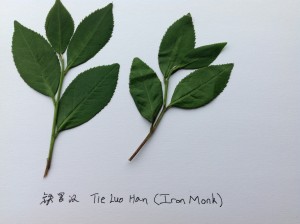The Tea Industry and its Misuse of the Term “Quality Tea”

There is no definition for specialty tea. The dictionary defines specialty as “ a product of a special kind or of special excellence”. The tea industry uses the word as a descriptor for tea that has no relationship to quality. The tea industry uses the word quality with just as much ambiguity as the word specialty. Defining quality is critical to the industry. Tea makers and consumers benefit most with the establishment of value that is clear.
The information necessary to establish value is currently not supplied by tea vendors. Verifying authenticity must be a part of determining value. Barbara Dufrene pointed that out in her article, ‘Time to Set a Benchmark and Define Specialty Tea?’
I began my research into the elements of quality tea making with tea makers both in China and India. I spoke a with a broad range of producers including large and small tea makers. I discovered consensus. All teas, from every country, possess elements in common when it comes to quality.
There are 12 elements critical to establishing quality. I am proposing that these factors qualify a tea for the use of the term ‘specialty’ as an appropriate descriptor. Keep in mind that many of these elements can contain details that better define a tea. Drilling down into those specific characterizations are important when determining excellence, but here I propose only a baseline.
1. The condition of the leaf
The state of the leaf speaks loudly about the skill of the tea maker. The leaf should be intact with few exceptions unbroken.
2. Adherence to the plucking standard
Adherence to the plucking standard addresses the skill of the picker and the garden management.
3. Uniformity of the leaf
The uniformity of the leaf, here again, addresses the skill of the picker, and the garden management.
4. Origin
5. Harvest date
6. Cultivar
7. Tea maker
8. Processing
These first eight represent objective anchors for looking at quality. Without this information, authenticity becomes impossible to verify, making the quality objectively questionable.
9. Percentage of moisture remaining in the tea
Percentage of moisture variable is critical coming from the tea maker, but can also be affected by post production handling.
10. Color
11. Aroma
12. Taste
Nine through twelve require multiple measurements at differing times, but the last three demonstrate a more subjective evaluation done by professionally trained evaluators with significant experience. All of this information must be revealed in order for the tea to meet the minimum standard to be considered “Specialty Tea”.
Each of these elements requires detailed discussions. I have left out my thoughts here, to encourage debate. In part 2 I will offer my thoughts. Sign up here to be part of the discussion.
Austin Hodge
